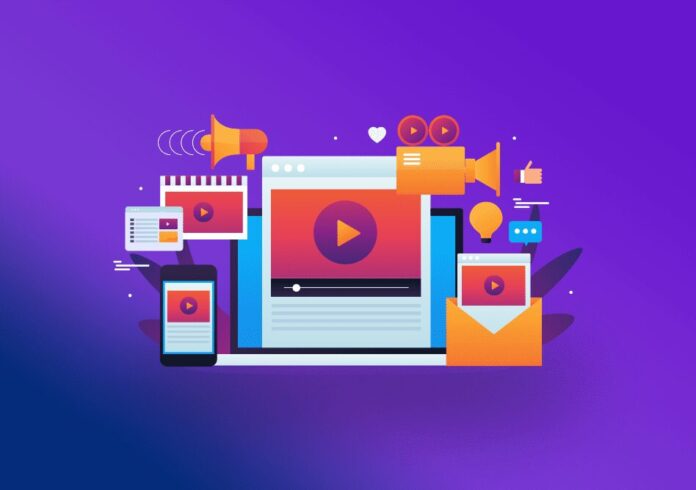The visual content on your website plays a vital role in attracting customers and promoting your services. Your readers will decide whether they will read your post or take action within a few seconds. Using powerful visual content can take your site to the next level. Sometimes visual elements explain a concept better than words. Whether it’s an image, video, or infographics, people prefer to receive information in a visual form because it is more engaging.
In the digital age, attention spans are shorter than ever, making text-based content unappealing. Visual content marketing is considered one of the most popular digital marketing trends used to keep your marketing campaigns consistent and resonate with people.
Learn about six types of visual content that you can include in your content marketing strategy with our Blog experts.
1. Images:

Images are among the most common types of visual content today. The pictures you use must be compelling enough to attract maximum attention. According to one study, content with attractive images can generate 94 percent more views than text-based content. The key to using images effectively is creating multiple images for various online platforms. For example, there is no guarantee that an image that was perfect on Pinterest will be good on Facebook as well. Make sure your pictures and photos are of high quality and relevant to the topic. If you want to be original, use your images to personalize your content. Before posting content with photos that do not belong to you, double-check if you are legally using those images.
How many images should you include in your content? Content marketers love to stick to ratios that promise higher engagement and compatibility. Many people think that the optimal ratio is one image per 75-100 words. Such posts are more likely to receive more views, likes, and shares than content with a different correlation. Too little or too many images can be a bad thing, so optimize your content for more engagement.
2. Infographics:

Infographics didn’t exist until the digital revolution began to affect business. Today, people on the Internet want reliable data presented in attractive graphic forms. People love content that presents data on a particular topic engagingly. The reason is a tendency to save time by getting right down to the point. The infographics are visually appealing and present the facts in a very easy-to-understand way. They contain valuable information and tell stories beautifully and directly. According to research, infographics are 30 times more likely to be read than plain text. It is a perfect tool for presenting complex data and statistics in an easy-to-use visual display for your audience, but the layout and design of your infographics should also be as effective as possible as suggested by Outliant. Whether you want to present complex data or step-by-step instructions, using infographics is the ideal solution. You can divide your dataset into bits and pieces, effectively helping users process and understand this information.
Except for infographics, there are charts, diagrams, and graphs that can help you visualize your content. Use them to convey strong and clear messages to your target audience.
3. Video:

Videos are an engaging type of content and an effective way to present your products or services. Internet users prefer to watch videos because they want to see a real product usage demo before making buying decisions.
You can use your smartphone to shoot a simple behind-the-scenes video of how your products are manufactured and then distribute it to your followers. Or, you can let your happy customers share your experience as a video with your followers.
The importance of video as a visual media can be proven by the fact that 78 percent of Internet users watch videos every week and 55 percent of people watch videos every day. Major platforms like YouTube have helped make videos hugely successful, and don’t forget that almost all social media platforms (Facebook, Instagram, etc.) allow videos. Moreover, there are a lot of tools for easy video creation, helping make professionally-looking animations, customer reviews, product demonstrations, and how-to videos. Learn fascinating animation facts to make sure you should include this type of visual content in your marketing strategy.
4. Screenshots:

Screenshots can be a visual check when it comes to confirming the claims you make in your content. With the help of a screenshot, you can give your audience a detailed explanation of the inner workings of a product or service that you offer.
There is no better way to convey the message in a step-by-step tutorial than with annotated screenshots. By adding arrows, underlining content, or placing important words in circles and squares, you make sure that users know what to do. It would be nice to offer a visual representation of each step, and then outline it below for better understanding.
5. Presentations / SlideShare:

Presentations are a great resource for visual content. Although nowadays, you can share your presentations with the world through platforms like SlideShare, which is an easy way to communicate with your audience. SlideShare presentations are a great way to share your thoughts concisely in an article in a visual, downloadable way. You can also use individual slides from SlideShare presentations as visual elements of your content – similar to screenshots. Make sure your presentations have a consistent look – fonts, colors, and borders should match. When adding text captions, make sure you don’t make any spelling or grammar mistakes. Share your data sources and take care of their quality.
6. Memes:
Memes are multimedia data accompanied by a concept or catchphrase. Marketing with memes can be a great way to promote your brand. They are convenient, cheap to manufacture, and can increase your brand awareness and engagement. All you need to do is follow the latest trends and understand what your audience finds funny. Although originally memes were only popular among millennials, they are now taking over the marketing world. Top brands like Disney and Amazon also follow this meme culture to interact with their audience.







